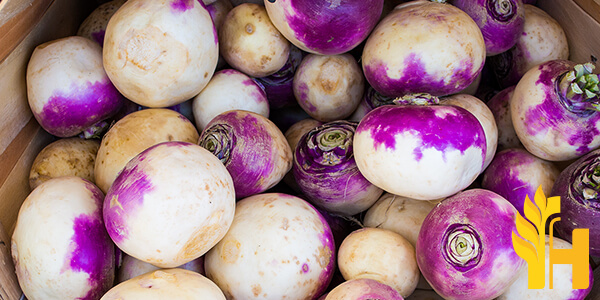Turnip price

Where to buy and sell Turnip, lowest (cheapest) and highest price.
check offers buy sell TurnipToday price for TurnipTurnip wholesale prices 2022
The Current commodity price of Turnip per kg, pound in the world in the global markets
turnip
Price range: 2.95 - 2.95 EUR / 1 kg | Market: La ferme Destexhe & Fils S.A.G.R. organic market | Date: 2025-12-04
turnip red p.v.n. case class 2
Price range: 0.8 - 1 EUR / 1 kg | Market: Veronamercato SpA | Date: 2025-12-03
turnip
Price range: 2.95 - 2.95 EUR / 1 kg | Market: La ferme Destexhe & Fils S.A.G.R. organic market | Date: 2025-12-01
turnip red p.v.n. case class 2
Price range: 0.8 - 1 EUR / 1 kg | Market: Veronamercato SpA | Date: 2025-11-28
turnip
Price range: 2.95 - 2.95 EUR / 1 kg | Market: La ferme Destexhe & Fils S.A.G.R. organic market | Date: 2025-11-27
turnip
Price range: 2.95 - 2.95 EUR / 1 kg | Market: La ferme Destexhe & Fils S.A.G.R. organic market | Date: 2025-11-24
turnip similar kg
Price range: 0.74 - 1 EUR / 1 kg | Market: Supply Central Markets Sevilla | Date: 2025-11-24
turnip red p.v.n. case class 2
Price range: 0.8 - 1 EUR / 1 kg | Market: Veronamercato SpA | Date: 2025-11-21
turnip
Price range: 2.95 - 2.95 EUR / 1 kg | Market: La ferme Destexhe & Fils S.A.G.R. organic market | Date: 2025-11-20
turnip red p.v.n. case class 2
Price range: 0.8 - 1 EUR / 1 kg | Market: Veronamercato SpA | Date: 2025-11-19
turnip
Price range: 2.95 - 2.95 EUR / 1 kg | Market: La ferme Destexhe & Fils S.A.G.R. organic market | Date: 2025-11-17
turnip similar kg
Price range: 0.6 - 1 EUR / 1 kg | Market: Supply Central Markets Sevilla | Date: 2025-11-17
Turnip
The turnip (Brassica rapa) is a root vegetable, usually white or purple. It has many different common names throughout the world, including "swedes", "neeps", and "turnips". The most frequently encountered cultivars of turnip are either white or yellow in color. There are also red-fleshed turnips, however, these are less common in most parts of the world. Turnip plants often reach between 50 cm to 100 cm in height. The leaves are alternate and compound, with white or purple flowers that develop into yellowish-white edible roots when harvested. A root vegetable like others (carrots, parsnips, etc.), turnips are frequently grown for the consumption of their starchy taproots.The lower leaves are also sometimes eaten as part of the turnip greens or leafy turnip tops, which are popularly served alongside vinegar. The young leaves may also be boiled and served with butter like other cooking greens, while older leaves can be consumed the same way as mustard greens. Turnips can be roasted, boiled, or fried and are frequently eaten mashed in a variety of ways. Scraps left after pureeing have been used for bread making in Norfolk, England. The turnip also has a place in Scottish cuisine: In Eastern Scotland (where turnips were introduced from the continent in the early Middle Ages), they are widely used - often mashed together with potatoes.
They are also very popular in Germany, Eastern Europe, and the Baltic region, where it is a traditional winter dish to use up leftover boiled or mashed turnips. It is usually slowly cooked for several hours with onions and sometimes other vegetables like carrots, celeriac, cabbage, or sometimes meat. The turnip is also commonly used in Japanese cuisine, where it is known as "Nagaimo". It's often grated to thicken sauces and soups, cooked on its own with other root vegetables, put into pickles, or added raw to salads.
The production of turnips is a large industry in Japan, where the roots are called "daikon," meaning large root. In 2001, Japan produced more than 2 million tonnes (2.2 million tons) of daikons each year and exported a considerable amount to South Korea and other Asian countries. Most of the crop was grown on the island of Hokkaido. Japan also grew an average of 10 percent of the global supply of rapeseed (a source for biodiesel fuel and health-food oils), and daikon was its most important market variety.
Global turnip production
Global production of turnips is estimated to be around 24 million tonnes per year. The majority of turnip production occurs in China, which accounts for approximately 80% of the world's total. Other major producers include Russia, Japan, and India. Turnip greens are a good source of vitamins A and C, as well as dietary fiber. They can be eaten cooked or raw and are often used as a garnish or as a component of salads. Turnip greens are also a common ingredient in southern-style cooking. Turnips can be stored for several months in a cool, dry place. When selecting turnips, look for ones that are small and have smooth, bright-colored skin. Avoid turnips that are large or have blemishes on their skin. Turnips are a root vegetable that belongs to the brassica family, which also includes cabbage, broccoli, and Brussels sprouts. The scientific name for turnips is Brassica rapa. There are many different types of turnips, including white turnips, yellow turnips, and red turnips. Turnips vary in size, shape, and color, but they all have a similar taste and texture. Turnips are a low-calorie food that is high in vitamins and minerals. One cup of cooked turnips contains only 37 calories, but it is a good source of vitamin C, vitamin B6, potassium, and magnesium. Turnips are also a good source of dietary fiber and contain some protein.Download our new
Husfarm App
Stay up to date with the current prieces of agricultural products all over the world.
Do you want to sell agricultural products?
Are you an Agricultural processor looking for high-quality products to buy?
Post an ad for FREE!
